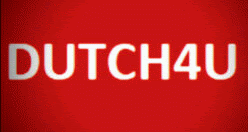Independtly used words end with an -n if they refer to people not being mentioned in the sentence in case.
Hoeveel cocaïneverslaafden zijn er in Amsterdam?
(How many cocaine addicts are there in Amsterdam?)
They don’t end with an -n if they refer to people who are being mentioned in the same sentence.
Veel supporters reisden met de trein en weinige met de fiets.
(Many supporters travelled by train and a few by bike.)
If the substantively used words refer to animals, plants or objects, they never end with an -n.
![]() Choose the language of the subtitles via settings.
Choose the language of the subtitles via settings.
Medial letters (tussenletters: s or e(n) the medial -e or -en
Main rule:
You use the medial -en whenever the first word of the contraction is a noun that has only one plural form, ending with -en.
It is kippenei, because ‘kip’ has only got one plural: kippen. (chickens)
But it is aspergesoep because the plural of asperge is asperges,
Exceptions
Some words keep their medial -e, even though according to the main rule, they should be written with -en:
a) words that refer to a unique person or object: zonnestraal and maneschijn for there is only one of those.
b) In adjectives of which the first part is only there to accentuate the second part: apetrots, reuzeleuk and beregoed.
c) The first part of the word is a noun without a plural: rijstepap and roggebrood. ‘Rijst’ does not have a pluralform, ‘rijsten’ is a non-existing word.
![]() Choose the language of the subtitles via settings.
Choose the language of the subtitles via settings.
